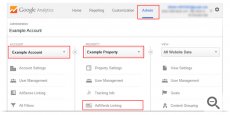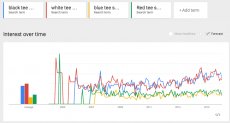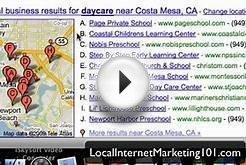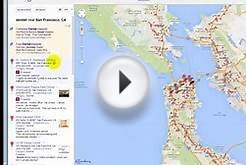 Starting up a new online business has a lot of moving parts, and on top of actually making the products or developing your service, you’re probably spending a lot of time taking photos, writing descriptions, setting up the technical stuff, and figuring out how to drive customers through developing a marketing plan.
Starting up a new online business has a lot of moving parts, and on top of actually making the products or developing your service, you’re probably spending a lot of time taking photos, writing descriptions, setting up the technical stuff, and figuring out how to drive customers through developing a marketing plan.
Oh man.. marketing? That sounds hard.
Really killer marketing is a lot of hard work, but thankfully one of the best ingredients to a killer marketing formula is starting small, taking advantage of what you know, and using the tools you already have.
With Shopify’s $100 AdWords credit for new stores, for example, you can take advantage of one of the foremost platforms for search engine marketing to drive early interest, learn more about your ideal customer, and start developing your own marketing secret sauce.
So let’s get started, and take a look at what you can do with your first $100 in AdWords.
Set Up Your Google Accounts
Doing this will allow you to measure your how your AdWords campaigns are driving business. It also provides access to tools you can use to improve your advertising efforts, such as AdWords reporting, and Display Advertiser features that can be used to build laser focused remarketing campaigns.
Note: Whether you choose to use AdWords or not, you should absolutely configure Analytics for your shop. The insights you can gain about your store from the robust, free reports in GA are extremely valuable. (Read more on how to configure Google Analytics for success.)
If you’re a Shopify customer, you’ll have a message in your admin giving you a free $100 credit 24 hours after you’ve paid for your first month of service.
Next, connect your Google Analytics and Google AdWords Accounts. Do this by logging into Google Analytics, clicking on the Admin tab at the top, navigating to All Products under the Property header for your store’s account and clicking on the Link AdWords button. (Still need help? Get the step-by-step instructions from the Google Analytics help files.)

Once you’ve got your two major advertising toolboxes set up and connected, you can start planning how to spend your advertising dollars.
Planning and Setting Up Your Campaigns
Creating AdWords Campaigns involves a planning step, a research step, and an execution step.
- Planning: Ask questions about your business, products, and goals.
- Research: Do Google searches for your products, use the Keyword Planner, review your Analytics data, and read more about ways you can be more successful.
- Execution: Set up Campaigns and Ad Groups, configure settings, and create ads.
Approaching your set up this way helps you stay focused, and it breaks things down into small, easy steps.
This step-based approach helps you reach small goals faster while helping you stretch your budget. So let’s look at ways you can get started with that $100.
What Should You be Advertising?
If you only offer a single, specialized product, your decision on what to advertise is an open and shut case.
For store owners with a variety of products, some decision making has to take place.
Ask yourself:
- Which of my products have the highest ROI?
- What are my biggest sellers?
- Which (if any) of my products are trending?
 These three questions will help you quickly identify and prioritize your most valuable products or product categories. Using these as your starting point for advertising will give you a greater chance at early success you can use to help you build your advertising out in a more thorough way.
These three questions will help you quickly identify and prioritize your most valuable products or product categories. Using these as your starting point for advertising will give you a greater chance at early success you can use to help you build your advertising out in a more thorough way.
For example, let’s say you have a store that sells plain colored tee shirts, basic jeans, socks, and other staple items of clothing.
If you know your best margins overall are on tee shirts, that might be the best place to focus. Assuming you carry multiple colors of tee shirt, let’s plug each color into Google Trends to see what has the most opportunity.
In this case, you can see that white & black tee shirts are fairly even in terms of trends, followed by red tee shirts, and blue tee shirts.
Working with a limited budget, my recommendation would be to start with the keywords that have lower suggested bids, and expanding what you advertise from there.
Once you’ve identified what you want to advertise, it’s time to choose your keywords and set up your Ad Groups.
The trick with a successful ad group is to determine ahead of time how you want to categorize your products. In the tee shirt example, we’re going to group our tee shirts by color, however, there are an infinite number of ways you could categorize your products.
Within each ad group, choose 5-10 words or phrases that best describe your product. For example:
Grouping these keywords together based on commonalities (in the case of the tee shirts, we’re grouping by color) gives you a sense of how much you’ll be spending, and how much traffic could potentially come through each group.
Since we’re just starting out, don’t choose too many keywords for each product. Stick to around 5 for each product that seem to have the best combination of clicks/impressions, cost per click, and click through rate.
How Should You Advertise?
Once you’ve identified the products you want to advertise, and the keywords you want to use to target them, it’s time to get it set up.
There are a few key ways you can set up your advertising to make your $100 return results.
- Use separate Ad Groups for each product
- Use Modified Broad Match on your keywords
By giving each product its own Ad Group, you can more tightly control two important aspects: your keyword list for that product, and the ads for that product.
Having ad copy that match your keywords will greatly improve performance, and allows you to create ads that link directly to that specific product. Always try to link to a specific product or category of products wherever possible.
Modified Broad Match is a tool you can use to refine the searches your keywords match for with greater control than Broad match, but without as much restriction as Phrase or Exact match.
For example: handmade baby blankets as a Broad Match term could match for any variation of “handmade” “baby” and “blanket” in any order, including things that Google assumes are relevant, like quilts, monogramming, or factory-made baby blankets. Your chosen keyword will be matched to the maximum number of search terms that might match your keyword.











